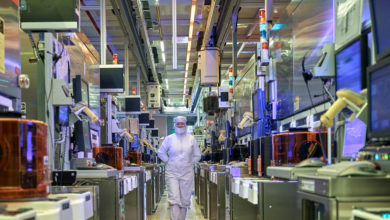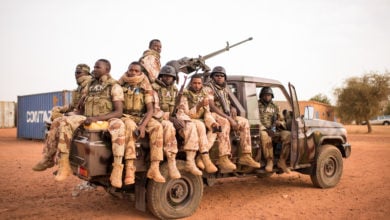For the past year the Obama administration has been touting the policy of the “Asian pivot,” a gradual redistribution of U.S. resources into southeast Asia. Pres. Barack Obama’s November trip through Asia was promoted as a diplomatic tour designed to reinforce established alliances and forge new allies in the region. That same month, the Organization for Economic Co-Operation and Development released a report saying that the People’s Republic of China would have the world’s largest economy by 2016, overtaking the United States. The gradual refocusing of U.S. foreign policy towards Asia is meant to stop the OECD’s prediction from coming true.
Obama’s tour began in Myanmar, where he was the first sitting U.S. president to visit the country. The visit coincided with the lifting of sanctions against Myanmar. Myanmar and several of the nations on the tour, such as Cambodia, have long been allies of China and the U.S. appears to be trying to forge alliances with them as a way of curbing Chinese influence in the region.
But other recent actions by the U.S. in Asia have not had nearly so “diplomatic” a flavor. In August, the U.S. launched a “missile shield” in Japan, ostensibly to knock away debris from a North Korean satellite. But experts point out that the trajectory of the “shield rockets” would not intercept falling debris, but could be used against China and North Korea.
In December, the Pentagon announced that there would be an increase in U.S. troops, ships and aircraft in the Philippines, a U.S. client state that has recently been in territorial disputes with China over the Spratly Islands. Chinese leaders have called the expansion of U.S. forces in the Philippines a threat to their national security, with Chinese Communist Party Chief Xi Jinping going so far as to urge the country’s military to “prepare for struggle” without naming the enemy.
Laughably, the United States’ response to China is that the military presence in the Philippines is “humanitarian” in nature, and that the U.S only intends to help the Philippines recover from Typhoon Bopha. How aircraft carriers are supposed to help the Filipino people rebuild is anyone’s guess. Meanwhile, the government of the Philippines has continued its policy of torturing and disappearing dissenters while enjoying $700 million in “aid” from Washington, just since Obama took office.
Last summer, US Defense Secretary Leon Panetta announced that the U.S, which already has 50 percent of its Navy in the Asia-Pacific region, will have 60 percent of its warships—the majority of the largest navy in the world—in Asian waters by 2020. This comes as the U.S. is planning the construction of a large naval base on the South Korean island of Jeju, despite the fact that 94 percent of the residents of the island’s largest village voted against the building of the naval base.
Still, Panetta thoroughly refuted any notion that the buildup of the U.S. war machine in Asia should be any cause of alarm for the Chinese. “Some view the increased emphasis by the United States on the Asia-Pacific region as some kind of challenge to China. I reject that view entirely,” Panetta said. “Our effort to renew and intensify our involvement in Asia is fully compatible … with the development and growth of China. Indeed, increased US involvement in this region will benefit China as it advances our shared security and prosperity for the future.”
But in November, Panetta announced that F-22 and F-35 fighter planes would be in Japan by 2017. This means that China’s major cities would be within striking distance of the world’s most advanced warplanes by the time it becomes the world’s largest economy.
Many in the U.S. government allege that it is nonsensical to claim that the U.S would want to ever wage war against China, as the Communist Party of China has decided to provisionally open the country’s markets up to foreign finance capital, and that capitalists in the U.S have much to gain from China’s market. But it must be remembered that China’s ruling Communist Party, upon coming to power under the leadership of Mao Zedong, ended decades of colonial exploitation of the Chinese people. The CPC still dictates the terms under which foreign companies can enter into the Chinese market. Even this is unacceptable to U.S. imperialism. They would like to overthrow the CPC and see the installation of a regime fully compliant to the whims of imperialism.
In addition, the U.S, as the current master of the capitalist-world, cannot allow a foreign market to overtake it in profitability, as the Chinese market currently seems capable of doing. It must thus seek to break up that market into more easily controlled fiefdoms. U.S. imperialism aspires to the ultimate break-up of the People’s Republic of China, and the recolonization of the Chinese people.



